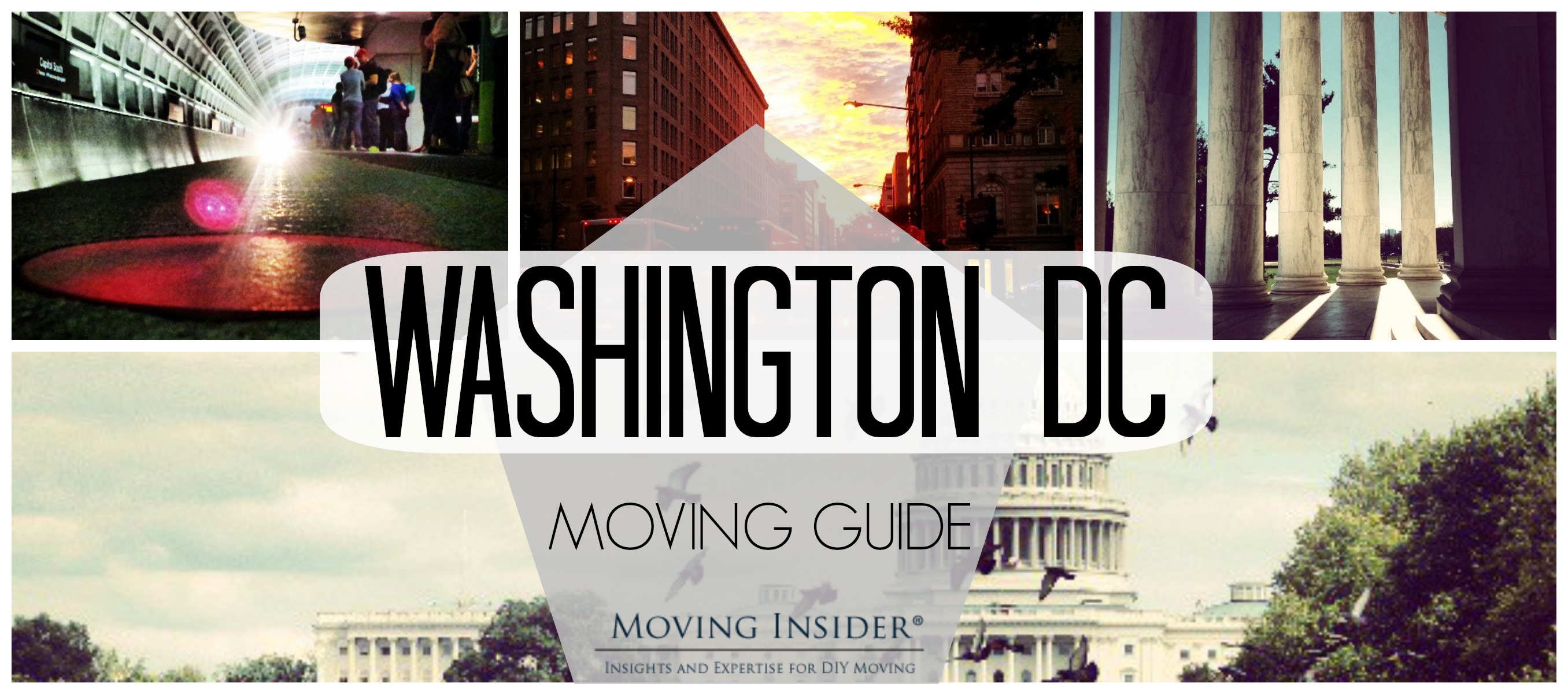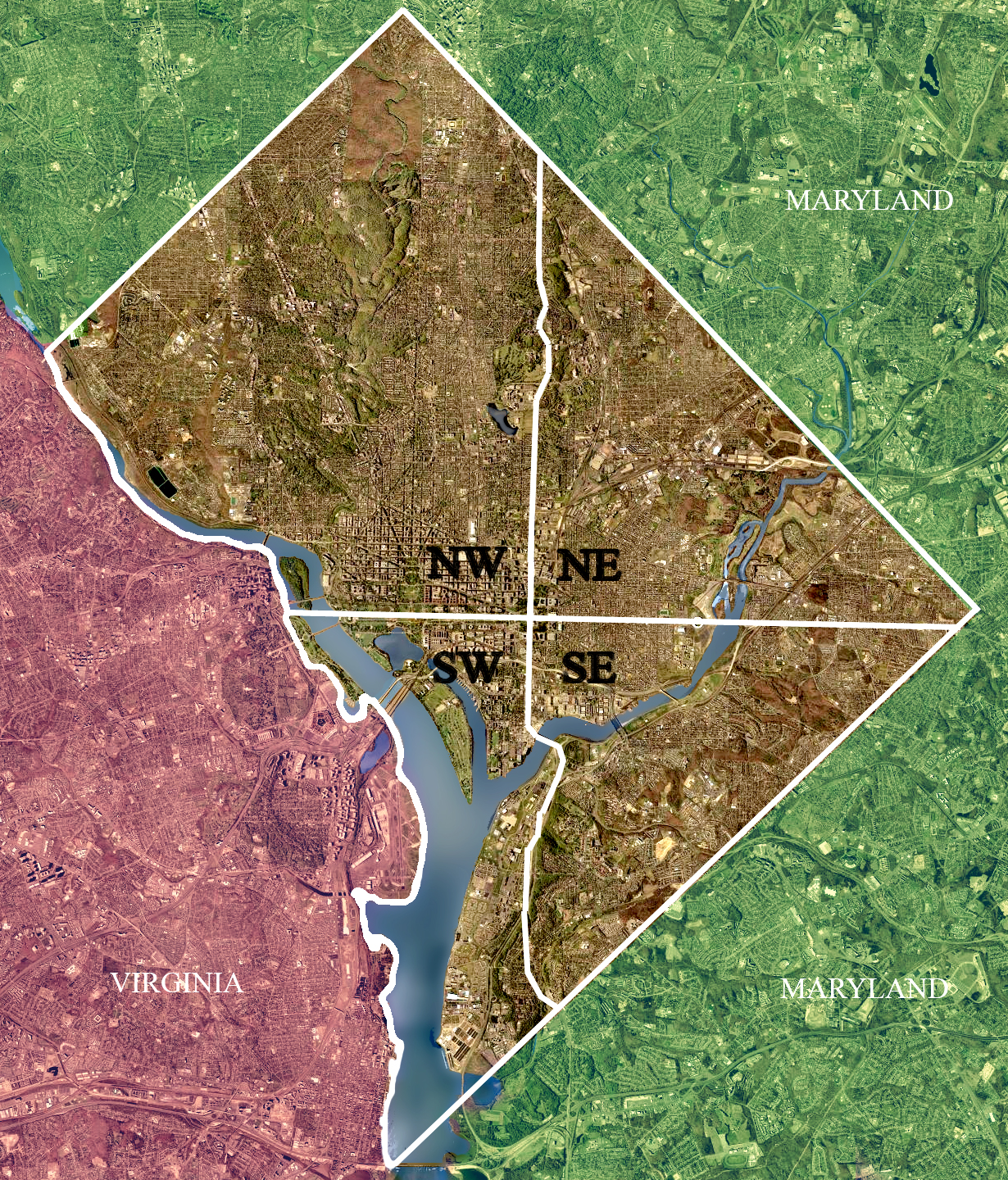
Moving to Washington DC can be a challenge, but living in a city that never stops is certainly a rewarding one. From L to R, Clockwise — Capitol South Metro Station, Farragut Square, Jefferson Memorial, U.S. Capitol. Photos used with permission via Instagram.com/shaynedwyer
Welcome back to Moving to Washington DC! This is part two of the series, so if you haven’t yet, be sure to catch up on Part 1 before reading any further.
If you have read the first part, however, we hope that you’ve had enough time to think about what type of housing you want to live in. Washington DC provides many different options that range from studios to five bedroom town-homes. Being one of the oldest cities in America, however, can make moving into any of those places quite the challenge. Between getting the moving truck down the tight alley, or carrying your sectional up the narrow staircase, moving in the district can be a headache.
But there are a few steps you can take to make moving in that much easier. From using a smaller truck to hiring outside help, Moving Insider will get you ready to move in in no time.

To Bring Your Car or Not to Bring Your Car
That is the question. Like I mentioned at the beginning of Part 1, Washington DC streets were not designed with the modern car in mind. Many of them are narrow, show signs of age and may cause some bumps and bruises on your precious vehicle. Add on top of that limited amounts of parking, traffic at all times throughout the day and for many, the inability to parallel park, and the reasons why most just decide to sell the car or leave it at home with a family member just continue to stack up. If you know that you will be bringing your car for sure, look for housing that has a parking spot or two available to residents.
Limited amounts of street parking are available, payable by meter or monthly residential parking permits. The public transportation system is also very robust in Washington DC which makes it easier to decide to ditch the car. Using a combination of bus and subway systems, commonly referred to as “the metro,” you can get pretty much anywhere in the city.
Navigating the City
Whether you choose to bring your own car, ride the bus or the train, bike or walk, there is one thing you need to remember — the city is broken into quadrants and the same address can exist in four different locations (once in each quadrant). With that being said, it’s important to pay attention to the details in an address to figure out where you need to go.
For example, 600 G Street, Northwest, Washington DC is a different address than 600 G Street, Northeast, Washington DC. And those are both different addresses than 600 G Street, Southwest, Washington DC. And guess what? Yeah, you guessed right, there’ s a 600 G Street, Southeast, as well.
This was done intentionally when the city was planned (crazy that someone would do that, right?) and it’s where the saying “all roads lead to the capitol” comes from. The U.S. Capitol is “ground zero” and where all addresses start — so as things get farther away from the capital, the number in the address increases.

Cargo Vans and Pickup Trucks Make for Fewer Headaches
It’s as simple as that. A 26′ moving truck is going to be a headache — if not impossible to drive through the city. There are many people who complete the task, but driving a moving truck as large as that through a city can be quite the task. And while all the other stresses of moving day are setting in, it can be just one more thing to not have to worry about.
Depending on the day and other various factors, a pickup truck or cargo van could also be a more cost-effective option in the long run. When you arrive on moving day to the back alley in the smaller vehicle or even a 15-foot truck, you’ll be thankful you made the right choice.
Temporary Parking Permits
You’re going to need somewhere to park the truck for unloading, and since most moving trucks don’t bear commercial plates you can not park in commercial unloading zones.

These permits can be obtained from your local police station — all you need to bring is proof of residency like a utility bill or drivers license.
Talk with your building manager, landlord or real estate agent about filing for a temporary no parking zone in front of your new residence for unloading purposes.
Another option is to request a visitors parking permit from the local police station — all you need to bring is proof of residency like a utility bill or drivers license. The visitors parking permit is also a good idea for any friends or family helping you move. These passes will allow you to park for unlimited hours during the dates listed on the permit in residential parking zones at no charge.
The residential parking zones are where the monthly residential parking permits that were mentioned about earlier are applicable. Remember however that these permits will not guarantee you a spot — only allow you to park in the zone listed on the permit for free.
Hire Out
Let’s face it, there are professional movers for a reason. Tight corners, narrow doors, never-ending staircases — it’s enough to give a person nightmares weeks before move-in day. Sometimes things are just better left to the professionals. The experts at Moving Help in the Washington DC area deal with these tough moves day in and day out, and they’re the best of the best because of it.
Think of them like tug-boat captains who tow giant cargo ships through narrow channels — these guys are tough as nails and know how to properly get the job done. You can schedule these master movers to meet you at your new home and take care of the moving in for you. They can even drive the truck through the city if you’re uncomfortable doing that too. The possibilities are endless.
Do you live in Washington DC? Have any helpful tips for moving? What about the best spot to grab a bite to eat or catch a show? Let us know in the comments below.




